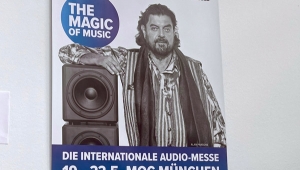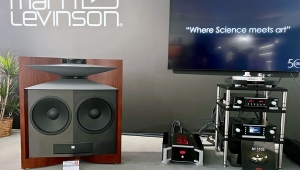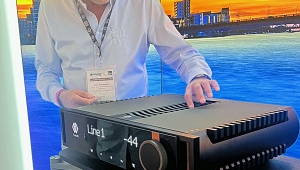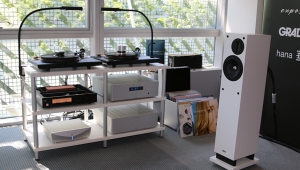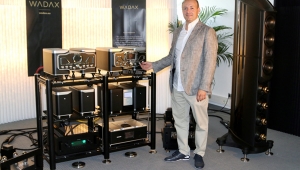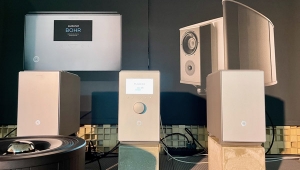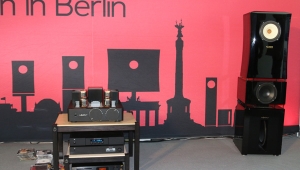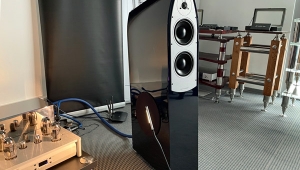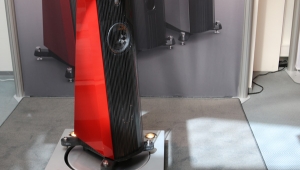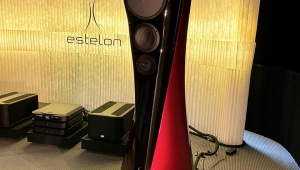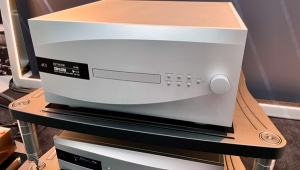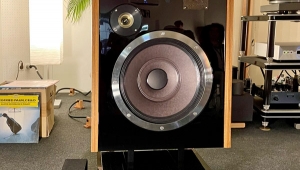| Columns Retired Columns & Blogs |
Ortofon MC Diamond Cartridge, Audiovector R11 Arreté loudspeakers, TechDAS Air Force V Premium turntable, SME V tonearm, Einstein and Mark Levinson amplification
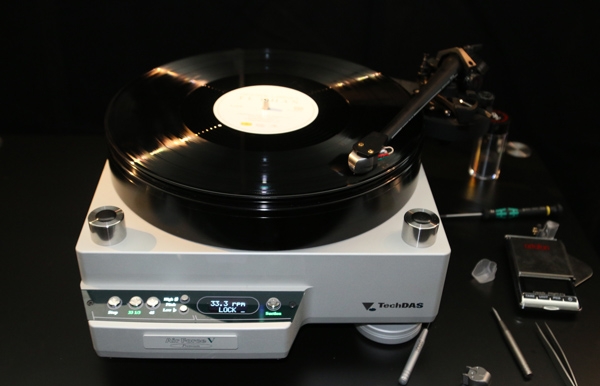
In the US market it isn't every day you see big, shiny red speakers—cars, yes—but less often flagship floorstanders. Here, a pair of tall, Danish flagships, the Audiovector R11 Arreté Titanium speakers clad in red enclosures graced the room. A model above the Audiovector R8 Arreté that Jim Austin reviewed, they use the company's Quasi Dual Drive Avantgarde Air Motion Transformer (AMT) tweeters.
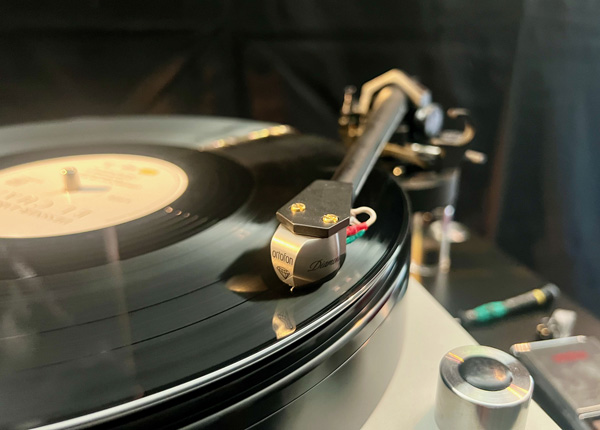
Speaking of flagships, I also had the pleasure of meeting Ortofon's COAR (Chief Officer Acoustics and Research) Leif Johannsen in, yes, the Ortofon room at the MOC and he delightedly told me about his brand-new top-of-line transducer, the Ortofon MC Diamond cartridge (€9000, estimated at about $10,000 US MSRP) due out in August. It represents an upgrade over his MC Anna Diamond MC cartridge and, as its name indicates, uses a non-magnetic armature and a diamond cantilever. Every tiny element makes a sonic difference, right down to the rubber compounds inside, which Ortofon developed and produced.
Johannsen told me that the equipment in the room's system is the same setup he uses for his engineering and testing at Ortofon in Denmark: a TechDAS Air Force V Premium turntable (heading photo), Einstein and Mark Levinson amplification, including a Levinson No523 preamplifier with class-A phono stage and a Levinson No534 stereo amplifier, a fully discrete, dual-mono design that outputs 250Wpc into 8 ohms and 500pcW into 4 ohms. Readers might know that the class-AB No534 is a Stereophile Class A recommended component. Suffice to say it was plenty to drive the 91.5dB/W/m-sensitive R11, a nominal 6-ohm load. Japanese-made Ortofon cabling was deployed throughout the system, Johannsen said.
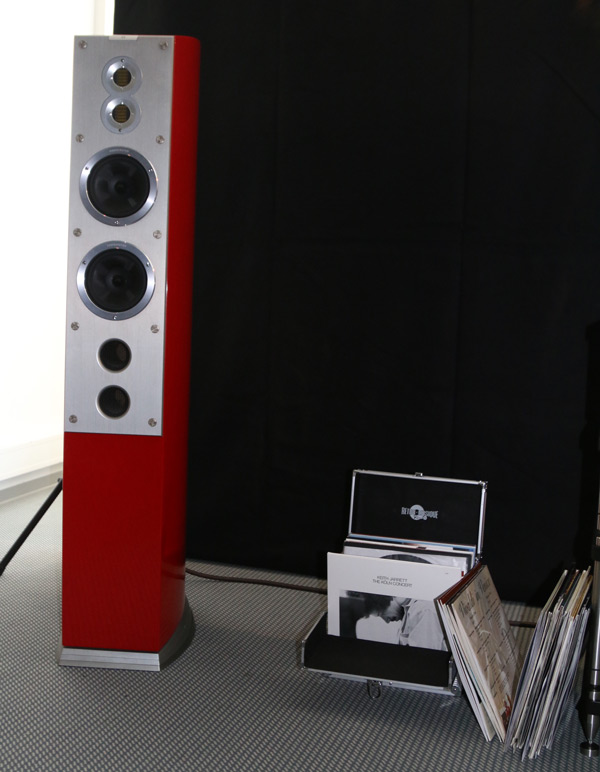
In an all-too-brief listening session there, highly resolved sound was the main theme. I listened to the title track from Bonny Light Horseman's self-titled album, where Anais Mitchell's vocals came through breathy and sweet alongside the saxophone's soft reediness—and breathiness at the end of phrases. Great separation of instruments all around. On Dessner's La Chan album's Piano Concerto for Two Pianos composed for the Labèque sisters, their two pianos seemed well placed within the wide soundstage. There was a strong sense of loud-to-soft dynamics on the force of their fingers striking the keys. The music on these pleasing recordings was rendered in high resolution with nice continuity.
- Log in or register to post comments
